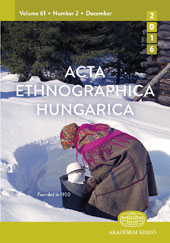„STUFEN- ODER SCHRITTWEISE, NICHT SPRUNGWEISE“ DER HEIDNISCH-CHRISTLICHE RELIGIÖSE SYNKRETISMUS BEI DEN FESTLANDGERMANEN ALS FOLGEERSCHEINUNG DER ELASTISCHEN CHRISTLICHEN MISSIONSSTRATEGIE
„BY STEPS, NOT LEAPS“ PAGAN-CHRISTIAN RELIGIOUS SYNCRETISM AMONG THE MAINLAND GERMANS AS A CONSEQUENCE OF THE ELASTIC CHRISTIAN MISSION STRATEGY
Author(s): György OroszSubject(s): Christian Theology and Religion, Cultural history, Cultural Anthropology / Ethnology, History of Religion
Published by: Akadémiai Kiadó
Keywords: Christian mission; continental Teutons; Khlodwig and the Francs; Lex Salica; Charles the Greath and the Germans; Saxon Baptismal Pledge; elastic missionary strategy; Pagan-Christian religious;
Summary/Abstract: Teutonic tribes can hardly be said to have been predestined to take up Christianity since over six hundred years passed before all the Teutonic tribes were converted to Christian religion, as opposed to the ancient world, which needed less than half of that time to achieve the same. A determining event in the conversion of continental Teutons was the baptism of Khlodwig and his warriors in 498. The Francs regarded Christ as a new earthly king of heavenly origins, a famous and mighty hero who grants military success to those who believe in him. The conversion of the real German tribes to Christianity was an accomplishment of Charles the Great, whose mission however should not be regarded as completed through the sword only, as he made significant contributions to the establishment of Christian culture as well. Following instructions by the Pope, the Irish and later the Anglo-Saxon missionaries did not destroy the shrines of Pagan cult, but in the spirit of elastic missionary strategy they consecrated them as Christian ones. The idols, however, had to be destroyed. The teachings of Pagan and Christian religions intertwined in the minds of the „new people“ and thus a kind of Pagan–Christian religious syncretism came into being, which can be traced for centuries to follow. Traces of Paganism can be found, although in a harmless form, even today: in myths, folk tales, legends and superstitions. The diffusion of Christianity and the intrinsic, spiritual conversion of Germans were aided by rich and varied missionary literature.
Journal: Acta Ethnographica Hungarica
- Issue Year: 53/2008
- Issue No: 2
- Page Range: 411-438
- Page Count: 28
- Language: German
- Content File-PDF

